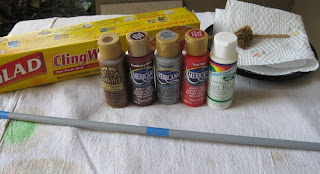
Glaze is a paint extender, it slows the drying time and in some instances can change the color a bit. In this application I used a light glaze instead of the transparent glaze I intended to use. By the time I realized I'd grabbed the wrong glaze I was too far along to stop and go get the right one.
For this application I'm mixing paint and glaze 1:1. After mixing the two together I take a little wad of plastic wrap from the kitchen and dab it into the paint/glaze mix. Dab most of the paint off on a paper towel and then randomly dab it on the arrow shaft. Move the plastic wrap around to maximize the random factor. You can put on as much or as little as you wish.
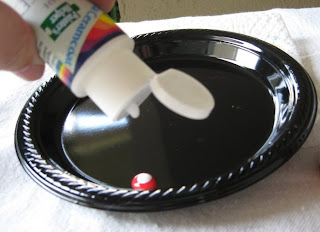
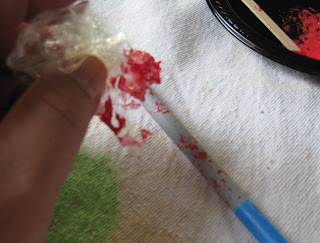
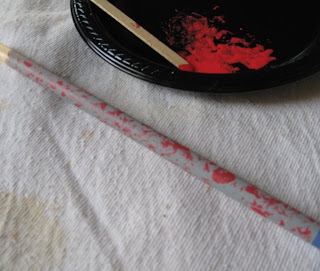
For the next technique I won't use glaze, just the paint. With this one two colors are used in addition to the base coat color.
With a dampened sea sponge the first color is dabbed onto the shaft in a random manner. As you do this turn the sponge around in your hand. Just as in the previous technique, get the paint on the sponge and then take most of it off on a paper towel so you don't get too much paint on the shaft. Most of the base color should be covered over but some will still show through.
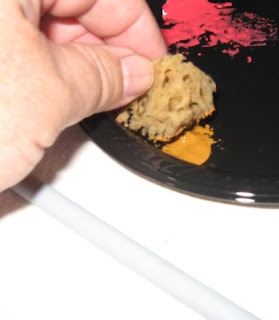
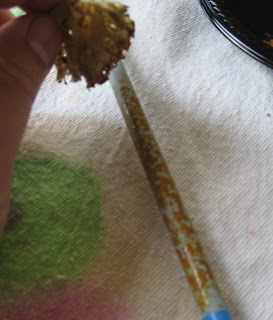
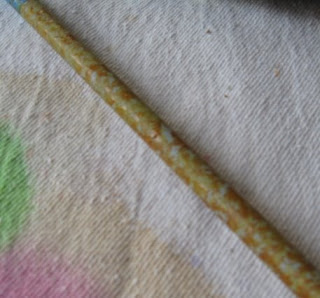 After the first color is dry, do the second color in the same manner. To help blend the colors and make softer edges you can lightly mist the shaft with water before putting on each of the two colors.
After the first color is dry, do the second color in the same manner. To help blend the colors and make softer edges you can lightly mist the shaft with water before putting on each of the two colors. The effect will look different depending upon which color you do first and the other second. With the two colors I chose there was little difference. If you'll look back through arrows pictures I've posted here you'll see some done with brown paints that look like a dirt camo one way and kind of sand camo the other. Be sure to do what I didn't do today: test your colors before starting the project.
The effect will look different depending upon which color you do first and the other second. With the two colors I chose there was little difference. If you'll look back through arrows pictures I've posted here you'll see some done with brown paints that look like a dirt camo one way and kind of sand camo the other. Be sure to do what I didn't do today: test your colors before starting the project.
The last technique is kind of interesting. This time we'll mix the paint and glaze at about a 1:5 ratio, 1 part paint to 5 parts glaze. Use the sea sponge to get the paint/glaze mixture on most of the shaft and while it is still wet, wrap it in plastic wrap. Wrap it rather snug. After a few moments, unwrap it and you'll see the plastic pull off some of the paint mix and leave behind an interesting texture. 
 Here are pictures of all three techniques, and of the bottle of glaze I meant to use...
Here are pictures of all three techniques, and of the bottle of glaze I meant to use...



 My apologies for the quality of the pictures. I was trying to shoot with one hand, hold the other hand in the picture, and do it all before the paint dried. I hope you're able to see the process without too much dificulty.
My apologies for the quality of the pictures. I was trying to shoot with one hand, hold the other hand in the picture, and do it all before the paint dried. I hope you're able to see the process without too much dificulty.
All the paints and glaze are available at craft stores like Michael's, Jo-Anne's, etc. These are the same paints I use for cresting. They are inexpensive, easy to use, and they come in enough colors that always be able to get just what I need.
If you have any questions just let me know.